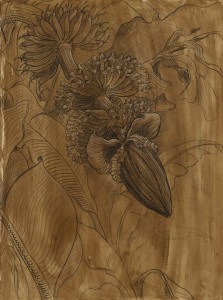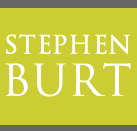Artist Statement
There is nothing more beautiful or more tragic than the human condition. In the fragile container of the body we make our way.
 The literature and imagery of mythology and religion express and give form to our desires and conflicts. As such I have found they are the perfect vehicles to explore my fascination with the human form. Reflecting the world of the spirit through the corporal state, the body has a miraculous ability to convey psychological depth without words. I have sought to harness this quality through meticulous attention to images that highlight this distinction. The underlying life inherent in all things can be shown. Art, like science, builds on the achievements of the past. As each era breaths life into the next, ways of seeing are developed to mirror the needs and desires of the time.
The literature and imagery of mythology and religion express and give form to our desires and conflicts. As such I have found they are the perfect vehicles to explore my fascination with the human form. Reflecting the world of the spirit through the corporal state, the body has a miraculous ability to convey psychological depth without words. I have sought to harness this quality through meticulous attention to images that highlight this distinction. The underlying life inherent in all things can be shown. Art, like science, builds on the achievements of the past. As each era breaths life into the next, ways of seeing are developed to mirror the needs and desires of the time.
The works I create are a result of a labor-intensive meditation exploring this evocative history of bodily images and the passage of time. Utilizing the ornamental, landscape, and figurative motifs of the 15th and 16th centuries, I have adapted elements of the periods vernacular graphic syntax as a means of creating images which suggest, in their essence, the possibility of transcendence from the present state. Among writers, Ovid’s polysemic treatment of human emotion and irrationality, is an essential inspiration, among artists, Schongauer, Mantegna, Dürer, Holbein, and Rubens. Their emblematic visions of the struggles of the mind and body remain a springboard to innovation and expression.
My interest in (now somewhat) anachronistic technique lies in its ability to shift the consciousness of both the artist and the viewer in creating images that require both labor- intensive process and contemplative viewing to draw out complex internal rhyme and rhythm. Each mark, expressive and ultimately revealing, reveals the trace of the artist’s movement and life, yet also creates the illusion of a separate life. This act of creation is still, after many years, incredibly fascinating.
I choose to represent the human body nude to highlight the complexities of the narrative form. Without clothes the body is without its mantle of convention. Seen as it is, the body is the locus of desire that will always, as long as we remain connected to our humanity, engage both our higher senses of beauty and more base desires. In investigating the core elements of the language of sign and symbol through the lens of the body and landscape, I believe it is possible to then create archetypes of human aspirations and passions. Once so engaged, the viewer can enter into a psychologically intensive dialogue that extends beyond expected satisfactions.







